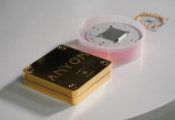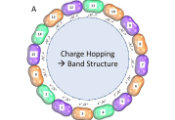Molecular Makeover: Scientists Uncover a Way To Break and Rebuild Molecules With Light
October 21, 2024 -- In a groundbreaking study, researchers from Purdue University and the Max-Planck Institute for Quantum Optics in Munich have revealed an unexpected twist in molecular physics: they can break molecules apart using laser light, only to reform them in a new, stable state. This discovery defies conventional chemistry, where severing chemical bonds typically results in the destruction of the molecule.
According to Valentin Walther, Assistant Professor of Physical Chemistry and Physics and Astronomy, and member of the Quantum Science and Engineering Institute (PQSEI) at Purdue University, these newly formed molecular states remain stable as long as the laser light is present.
“The molecules exist in a quantum superposition of being both intact and broken apart,” Walther explains. "Remarkably, this laser-induced binding can assemble multiple atoms into larger molecules, something not possible without the laser's influence."
The study, published in PRX Quantum, is the latest collaboration between Walther’s team and researchers led by Professor Immanuel Bloch at the Max-Planck Institute. Walther, who has worked with the Munich group since 2018, is a joint first author on the paper and played a crucial role in interpreting unexpected experimental results. His theoretical models not only explained the findings but predicted additional molecular structures that were confirmed by the data.
Central to the research is the exploration of Rydberg states—highly excited electronic orbitals that enable novel molecular behaviors. These states create extremely weak bonds, about a million times weaker than typical chemical bonds, allowing the formation of "macrodimers," molecules 1,000 times larger than ordinary molecules. First discovered in 2019, these macrodimers are comparable in size to bacteria despite consisting of just two atoms.
The experiments revealed that laser light can form and break these fragile bonds on timescales matching the vibrational motion of the atomic pairs, resulting in quantum mechanical superpositions of the molecule and its dissociated components. This ability to manipulate molecules in slow motion opens up new avenues for studying molecular binding and controlling chemical dynamics.
“This breakthrough offers a unique opportunity to observe and manipulate molecular interactions with extraordinary precision,” says Walther. “We’ve taken the first steps toward assembling molecules with light and aim to extend these techniques to bind even more atoms. These developments could be instrumental in creating large-scale entanglement for quantum information technologies based on neutral atom lattices.”
The Munich research team included Simon Hollerith, now a postdoctoral researcher at Harvard University, Johannes Zeiher, and Immanuel Bloch. Their joint efforts continue to push the boundaries of quantum science, promising new insights and technological advances in molecular physics and quantum computing.




































